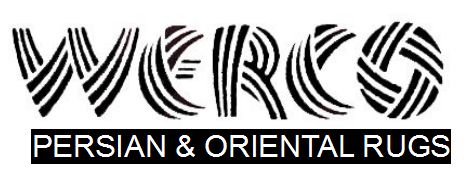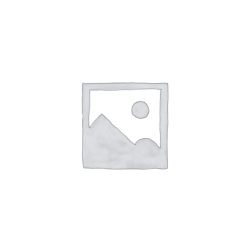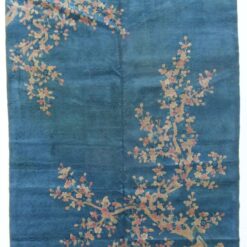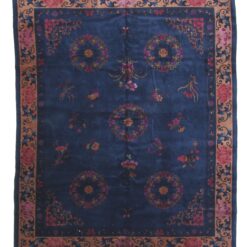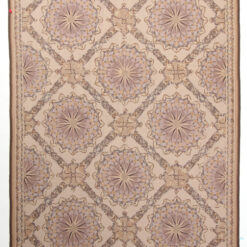Chinese carpets were first woven centuries ago by nomadic tribes in the Sinkiang and Ninghsia regions of western China – but it wasn’t until sometime towards the end of the 19th century that the making of rugs for export to the west began in earnest in China as the quality and fineness of the rugs was improved.
Using weaving techniques very much like those of Persia, India and Central Asia, Chinese (Peking) rugs were constructed primarily of sheep’s wool hand-knotted on vertical looms. Some rugs were woven entirely of silk or had silk pile while a lesser number used the hair of goats, camels and yaks. Though a Turkish knot was occassionally used for the border of the rug, Persian knots were typically used for the field. The pile was relatively long and the knotting – at 30-60 KPSI – coarse, but the yarn was twisted so loosely that its ends opened and spread into tufts which gave a denser surface appearance.
The coloring of Chinese rugs is quite unlike that of most other eastern carpets – often with a limited palette with as few as two colors. Surface designs were sometimes enhanced by incising the motif so the rug detail was in relief adding a 3D effect. Some of the popular motifs included dragons, lotus flowers and octagons.
